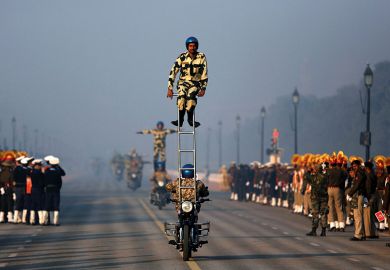Leading Indian universities have been given permission to set up international branch campuses for the first time.
The privilege has been granted to the 20 universities taking part in the “institutes of eminence” excellence initiative, according to the University Grants Commission.
The move opens up an additional channel to internationalisation in a historically closed system. The National Education Policy, launched with much fanfare last summer, gave permission to foreign universities to open campuses in India.
According to new terms published this month, an institute of eminence (IoE) will be allowed to open a maximum of three foreign branch campuses in five years. While IoEs generally operate with a greater level of autonomy than other Indian universities, their branch campuses will still require a 10-year strategic plan and approval from up to three government ministries.
Institutes of eminence can first open interim branches in other countries, so long as a permanent campus is completed within five years. The foreign ventures must keep to the home institution’s admissions procedures, curricula and exam systems.
The goal is to have at least one-third of students in the overseas branches as postgraduates or researchers.
The institutes of eminence scheme, established in 2018, includes public legacy establishments such as the University of Delhi, newer private schools like O.P. Jindal Global University, and several Indian Institutes of Technology (IIT). Public institutions under the scheme will be given state funding for the expansion.
Eldho Mathews, deputy adviser in the unit for international cooperation at Delhi’s National Institute of Educational Planning and Administration, told Times Higher Education that allowing major universities to expand overseas was a potential “soft power strategy by opening up campuses in the Global South”.
He saw the most potential from IITs, which are renowned for their engineering programmes, and “private institutions, mainly to meet the needs of Indian expatriate populations in different parts of the world”.
“Most of the IoEs are relatively better, compared to other Indian institutions, at international expansion, as they have better internationalisation strategies,” he added.
Mr Mathews writes in the January issue of Economic and Political Weekly that “leveraging international influence through higher education was an opportunity for disruption in India”, especially in the post-Covid era.
“Select Indian higher education and research institutions, with the support of the government, could play an important role to leverage their international influence in the emerging [Covid] situation by tapping into new academic partnership opportunities in the Global South,” he writes. “Such an approach should also focus on enhancing institutional capacity in partner countries to carry out research in partnership with Indian institutions.”
Currently, very few Indian institutions have overseas operations. Some Indian management schools were given permission to expand in 2017, while a few technical colleges such as Birla Institute of Technology and Science, Pilani and private schools like the Manipal Academy of Higher Education operate in Dubai.
However, there have not so far been any major Indian university overseas campuses. Several years ago, the grants commission shut down seven Middle Eastern branches of Mahatma Gandhi University for violating regulations.
Register to continue
Why register?
- Registration is free and only takes a moment
- Once registered, you can read 3 articles a month
- Sign up for our newsletter
Subscribe
Or subscribe for unlimited access to:
- Unlimited access to news, views, insights & reviews
- Digital editions
- Digital access to THE’s university and college rankings analysis
Already registered or a current subscriber?








